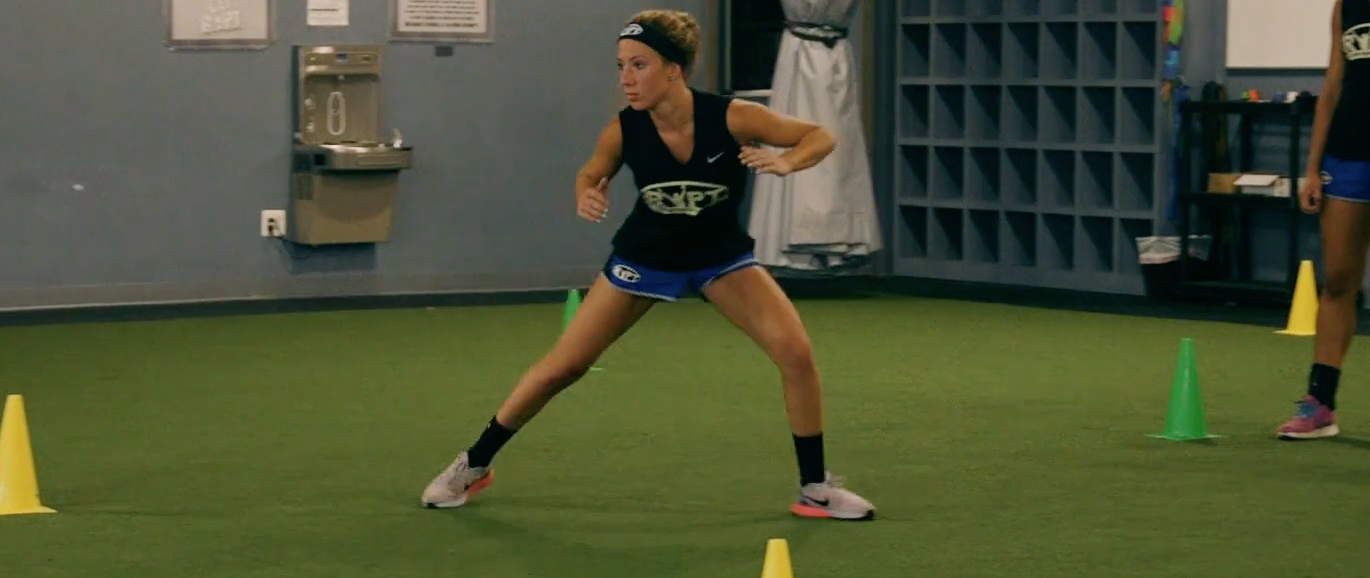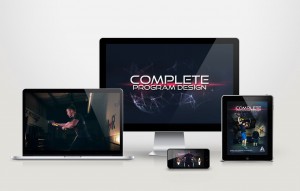Teaching the Lateral Shuffle
By: Craig White

It is possible to have a good training program, but that doesn’t make one a good strength and conditioning coach. I have returned to my office after many training sessions pondering how I could improve upon the lifts or drills just performed. The common problem I have observed during agility training is that athletes will anticipate the movements in a reaction agility drill. The athlete has muddled the goal of the drill in an effort to complete the drill first. Competition has compromised the drill and reinforced sloppy movement mechanics.
Reaction drills are a great choice for agility training because the movement pattern is not a pre-planned action that the athlete knows ahead of time. Reaction drills can easily be modified to match the demands of any agility movement specific to any sport. Most sports are based on unplanned movement patterns in response to the constantly changing game environment. Very rarely, only on set plays, will an athlete be able to follow a pre-planned movement pattern. Reaction drills will have the most sport transference of all agility drills.
One important training note is that many other training parameters must be given equal attention to enhance lateral agility skills. Agility can be improved by performing agility training alone, but an athlete will not reach an optimal level without adequate lower body strength, hip mobility, lower body stability throughout the ankles, knees, and hips, speed, and balance. Although this can seem like an overwhelming list of things to train, it is important to analyze sport movements and identify how the movement can be improved. Any well planned training program that includes strength and agility training will address these qualities. Only in rare instances where an athlete is deficit in one of the above mentioned qualities should additional programming be prescribed.
Perhaps a more simple approach to preparing for agility training has been suggested by Mike Boyle. He identifies three qualities that an athlete should possess for optimal lateral agility training: single leg strength is necessary to propel movement; eccentric strength is necessary to decelerate or brake the movement; and proprioceptive stability is necessary to maintain body control.
Now that the functional characteristics that apply to lateral agility have been addressed, it is time to address how to plan a training session. Beginning with the warm-up, it is important to work in many lateral based movements. Lateral exercises like lunges, skips, and bounding prepare the body for lateral movement by stimulating specific motor patterns and “stressing the abductors and adductors” (Boyle, 2004).
As the dynamic flexibility warm-up ends, lateral shuffles can be added as part of the warm-up and to begin working on movement technique. There is no end to the warm-up and beginning of the next drill, you just smoothly transition into practicing the shuffle techniques in the same space as if it is a continuation of the warm-up. Essentially, this progression of exercises is time efficient and the athletes are focused, fresh, and warmed up. It is the optimal time to train athletes’ proper mechanics and see the best results.

A shuffle progression to follow begins with a walking shuffle from a beginning point to an end point marked by cones or a line. Athletes should begin in an athletic stance on the balls of their feet, with feet under the hips, and toes turned out very slightly. This is a very subjective observation because as the speed of the drills begins to increase, athletes will turn their toes out to gain greater acceleration. The problem is this mechanic slows the changing of direction. It is crucial to reinforce proper technique throughout the early progressions at slow speeds. A coach must repeat simple verbal cues, and take time to demonstrate proper technique, which could result in the coach will feel more redundant than the athletes will perceive. Many athletes have never been taught some of these techniques, and need constant reinforcement to master the movement. Begin each session with a basic slow shuffle to reinforce the proper technique and continue working up the progression each session to provide the athletes with a challenge. If you progress too slowly, the athletes will lose interest and not value the drills.
Below is a shuffle progression that can be applied to any agility session:
1. slow shuffle 2. slow shuffle + change of direction 3. fast shuffle 4. fast shuffle + change of direction 5. reactive shuffle + change of direction
Performing the reactive shuffle is the best way to challenge the athletes and simulate more sport-like situations in which the athlete must react to the change of direction. Rather than performing a drill that emphasizes a shuffle to a mark, the drill emphasizes maintaining a fast reaction to shuffle in the correct direction. I have had great success at improving lateral quickness and better focus from athletes by implementing this training strategy. When properly applied, lateral shuffle drills can be very valuable. It teaches a fundamental movement pattern in sports. These drills allow athletes to master the movement without confusing the athlete and reinforcing improper techniques. Although the drills may not seem very challenging, spending 8 reps practicing these drills can be a tough agility drill on the athletes. A carefully prescribed lateral shuffle progression is unlike other agility drills because few other agility exercises require the athlete to maintain an athletic position throughout the drill, or use as many muscle contractions and eccentric actions to initiate agility cuts.
References:
Boyle, M. (2004). Functional Training for Sports. Human Kinetics: Champaign, IL.
About The Author:
Craig White, CSCS Head Strength & Conditioning Coach Marist College

—————————————————————————–





0 Comments for “Teaching the Lateral Shuffle”